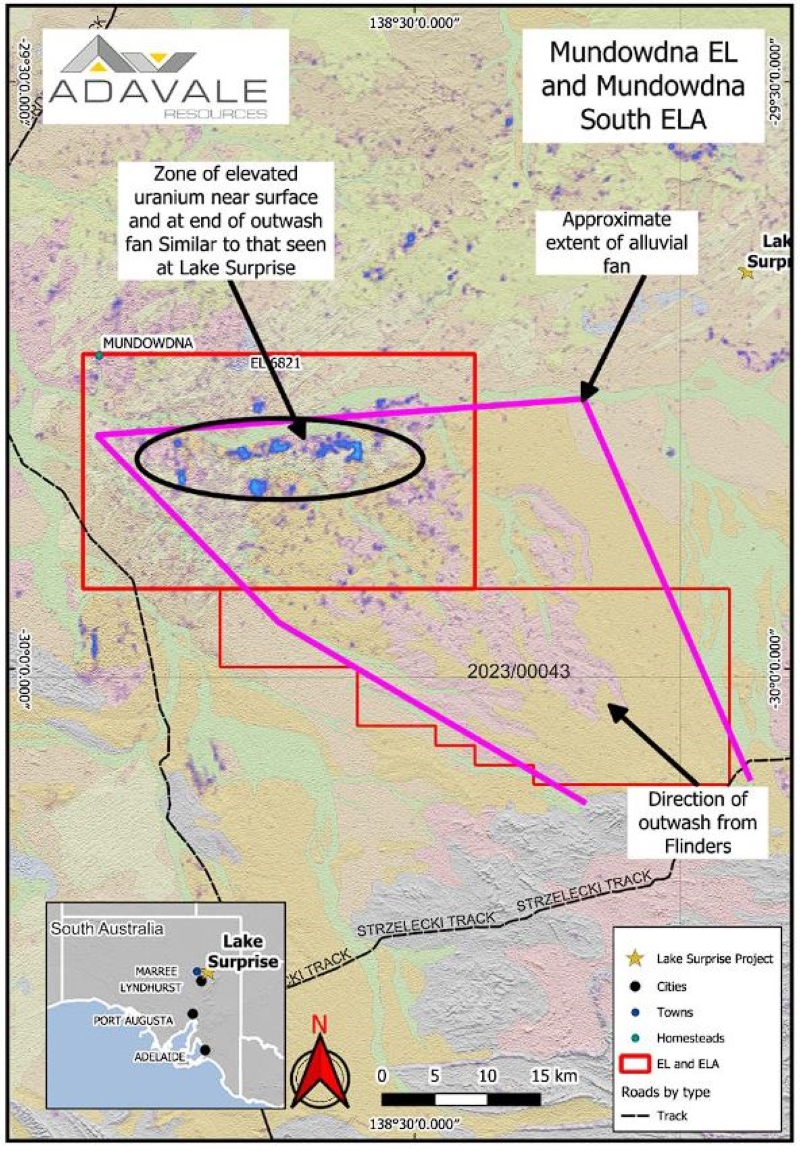Adavale extends ground in South Australia’s uranium-rich Flinders Ranges

With uranium prices through the roof, Adavale is looking to extend its uranium footprint. Pic via Getty Images.
- Adavale has applied to expand its Mundowdna project for another 591km2
- The Mundowdna project area has significant paleochannels that are highly prospective for uranium
- Uranium prices are going through the roof, as nuclear energy is seen as vital to our clean energy transition
With the need for nuclear energy back into the fore of our clean energy transition, uranium explorer Adavale Resources is increasing its highly prospective uranium footprint in South Australia’s Flinders Ranges.
Adavale Resources (ASX:ADD) is adding tenure to the south of its existing Mundowdna uranium project area after submitting applications for the ELA2023/00043 tenements which adjoin the south of its existing EL6821 licence which was approved late last year.
The licence will add 591km2 to the Mundowdna project area, taking its tenure up to a whopping 1,669km2.
EL6821 was acquired based on geological and geophysical similarities to its Lake Surprise project which has identified uranium in the paleochannel system.
Adavale started drilling Lake Surprise earlier this year within the silcrete-capped paleochannel identified in the project area.

Why are paleochannels significant for uranium?
Significant sandstone-uranium deposits are found in ‘fluvial’ sediments filling ancient river channels known as paleochannels and often occur within buried valley systems cut into bedrock which are known as paleovalleys.
South Australia’s Flinders Ranges region is littered with this type of geology, east of BHP’s Olympic Dam, the largest uranium deposit in the world, which contains >2Mt of uranium oxide.
It also hosts a significant number of other deposits such as Four Mile, Goulds Dam, Lyndhurst, Mount Gee and Yarramba.
The need for nuclear
One of the cleanest, highest output energy sources, nuclear energy is gaining back traction as a vital element to the world achieving its decarbonisation goals.
The World Nuclear Association has predicted that the number of operating nuclear power plants could almost double from 440 to 841 by 2040.
In the USA alone, analysis has predicted that the lowest cost reliable clean electricity system for the country would require an additional 300GWe from nuclear by 2050 – representing a three-fold increase in the nation’s nuclear energy output.
This has set a spark under uranium prices – which bottomed out in 2011 to US$18/lb and caused operating mines to shutter and development to grind to a halt.
Fast-forward to today, and the nuclear renaissance has sent spot prices for yellowcake to decade highs at over US$68/lb after starting the year at ~US$49/lb.
All about Mundowdna
Adavale says the Mundowdna EL6821 licence was originally acquired based on geological and geophysical similarities to its Lake Surprise project, where recent drilling identified uranium in the paleochannel system.
The explorer conducted a desktop study using satellite imagery, regolith landform and topographic data and found that the palaeochannel system originates from the central northwestern edge of the Flinders Ranges and extends over approximately 40km.
The explorer says it will commence preparation for large-scale exploration programs to assess priority targets.
“The Mundowdna South licence is a very strategic addition to Adavale’s current uranium exploration footprint in South Australia,” Adavale exec director David Riekie says.
“It will enable us to systematically explore the large palaeochannel system that extends northwest from the central part of the Flinders Ranges, which are considered to be the parental source of uranium occurrences in the region.
“The palaeochannel system, which is interpreted to extend over 40km, will be a focus of our exploration.”
This article was developed in collaboration with Adavale Resources, a Stockhead advertiser at the time of publishing.
This article does not constitute financial product advice. You should consider obtaining independent advice before making any financial decisions.
Related Topics

UNLOCK INSIGHTS
Discover the untold stories of emerging ASX stocks.
Daily news and expert analysis, it's free to subscribe.
By proceeding, you confirm you understand that we handle personal information in accordance with our Privacy Policy.








